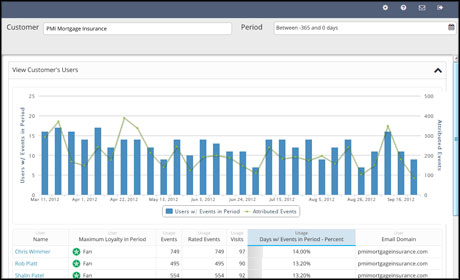
Incisive is moving from one-to-one to one-to-many subscriptions
Credit: Image by Ran Yaniv Hartstein on Flickr. Some rights reservedBusiness to business publisher Incisive Media is increasingly looking to attract company subscriptions.
The publisher, which has a number or paywalled titles, is focussing on getting businesses to take out subscriptions on behalf of the workforce, and in order to work out how people within a company access articles, the type of content they consume, and when they are reading, Incisive is using Scout Analytics, a data management platform used by several UK publishers including the Financial Times and Reed Business Information.
Journalism.co.uk caught up with Matthew Shanahan, senior vice-president of strategy at Scout Analytics, and Jon Bentley, head of digital commercial development at Incisive Media, at this week's AOP B2B Summit in London.
Understanding how individuals within companies
Jon Bentley explained how Scout Analytics is helping Incisive better understand the behaviour of people who have access to their paid-for sites as part of a company subscription – which helps in customer retention.
"Incisive Media's journey over the past two or three years is what we call one-to-one subscriptions, for the individual reader, to corporate subscriptions, what we call that one-to-many," Bentley explained.Incisive Media's journey over the past two or three years is what we call one-to-one subscriptions, for the individual reader, to corporate subscriptions, what we call that one-to-manyJon Bentley, Incisive
"We see the value for our business intelligence in selling to companies not to individuals, and that could be a company of five to 10 people, it could be a company with thousands of people with global offices."
But in shifting from one-to-one to one-to-many, the relationships become more complex.
"Understanding who those users are and what they are doing and understanding the complexity of the purchasing decision unit within those organisations becomes very difficult," he added.
Understanding complex relationships
In the past a B2B publisher like Incisive would employ telesales staff to call potential magazine subscribers to sell annual subscriptions.
Bentley said that Incisive recognised a need "to get to a stage where we are having conversations with complex organisations at many different levels within a hierarchy".
That might be a chief executive or the information officer who is the budget holder. "Often the budget holders are looking to bring spend on business intelligence down within an organisation," he said, "and we are trying to offer as much value as we can."
So to understand how individuals within a company use the service – and Bentley said what they are selling is a business intelligence service – they are using Scout Analytics.
"Scout is giving us the ability to have much more effective conversations, and they are much more valuable conversations for the clients in the corporate organisations as well. They want to know who is using it, they want to know who values it, and Scout allows us to look at that and have proper conversations about what they are doing.
"What is interesting, and this is something that is right at the heart of the conversations we are having internally, is that our products aren't magazines, we are selling not quite software as a service but we are selling business intelligence, and how our platforms deliver that intelligence to these organisations is changing," Bentley said.
"We are not just selling content, we are selling a service to these companies – and understanding how that service is used is important."

Example Scout Analytics data
Using Scout for corporate analytics provides Incisive with "much more insight" and makes it "much easier for us to develop a relationship for the clients", Bentley said.
Incisive publication Risk as an example
He used the example of Incisive's title Risk. "Traditionally we've had a niche audience of risk management specialists around the globe," who were sent a print magazine. "The editors knew who the key players were in each of the markets, and they would know them by name," he said.
"As the importance of risk management grows, we are now selling to big organisations rather than individuals." And Incisive is keen to fully understand that new audience and the type of information they want to read or consume.
Using data to create and send the most relevant content
Shanahan said that looking at the times of day and the days of the week users within organisations are accessing the business information "service" helps Incisive. "That allows for the sales person to have a much more transparent conversation with the customer and say where the value is being delivered."
Shanahan also explained how Incisive is using the data management and analytics platform to start to send the most relevant content to the individual when sending daily or weekly emails.
Transitioning takes time
Bentley explained that the transition to better understanding of one-to-many relationships has been some time coming. "For two or three years we have been trying to mash the data, bring the data together in our subscription bureau. We were aware that the information we had was too binary."
The process of technical integration, with the CMS and the subscription software started around 12 months ago, as did the training of marketing and sales.
"The data has been there and interesting probably for five or six months," he said, "and we are just beginning that critical momentum where for our big core clients we can go in and have proper conversations about use."
Free daily newsletter
If you like our news and feature articles, you can sign up to receive our free daily (Mon-Fri) email newsletter (mobile friendly).









